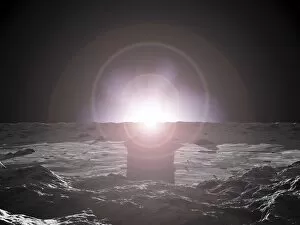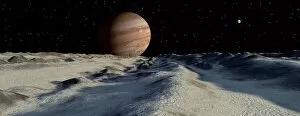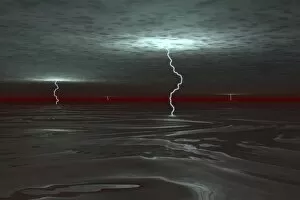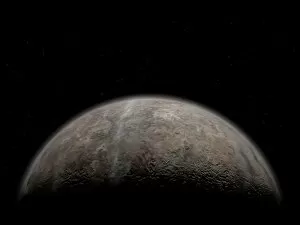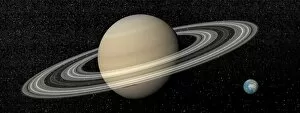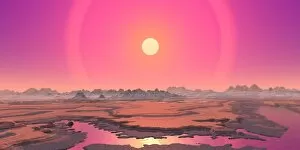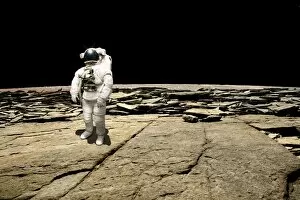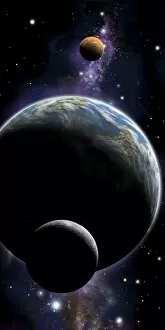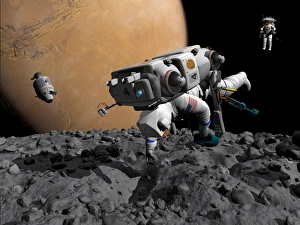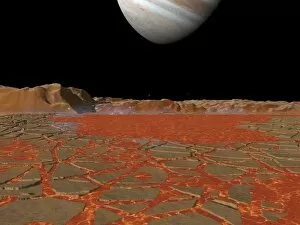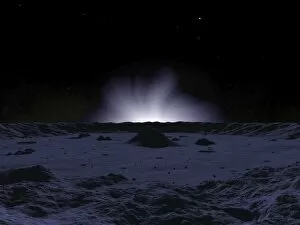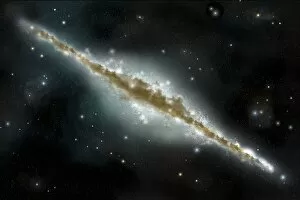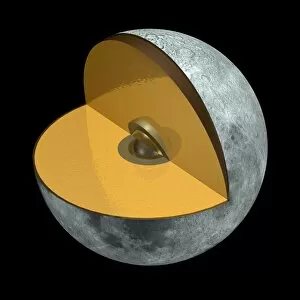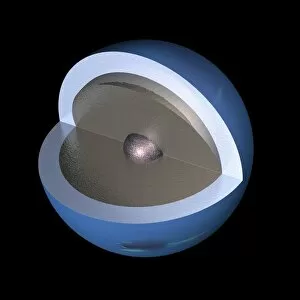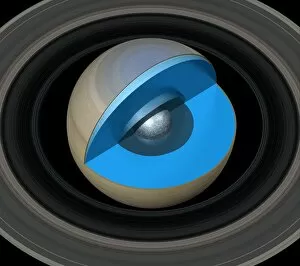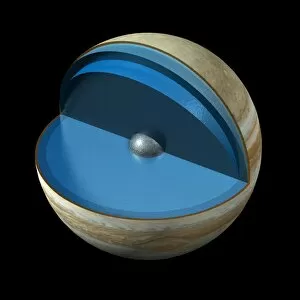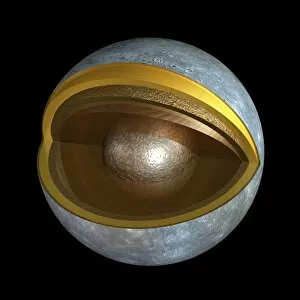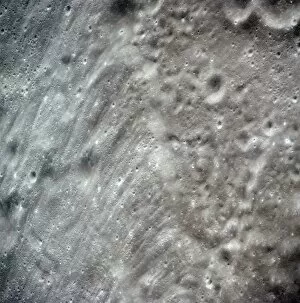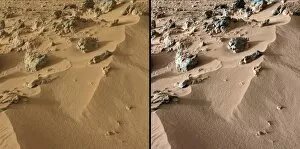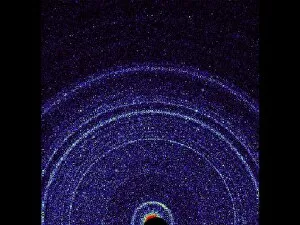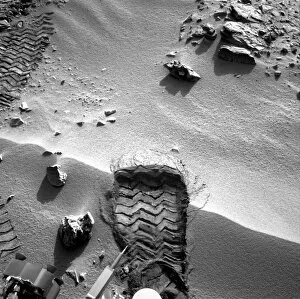Astrogeology Collection (#8)
Astrogeology, the captivating study of celestial bodies and their geological features, takes us on a mesmerizing journey through our vast universe
For sale as Licensed Images
Choose your image, Select your licence and Download the media
Astrogeology, the captivating study of celestial bodies and their geological features, takes us on a mesmerizing journey through our vast universe. As we delve into the mysteries of space exploration, we find ourselves standing on the lunar surface, gazing at its barren yet enchanting landscape. The artwork painted by nature itself leaves us in awe. Moving further outwards, we encounter a gigantic scarp etched onto Uranus' moon Miranda. Its sheer size reminds us of the immense forces shaping these distant worlds. From Rhea's surface, Saturn appears as a breathtaking spectacle; its majestic rings encircling the gas giant like an ethereal crown. We can only imagine what it would be like to witness this sight firsthand. A global mosaic of Mars reveals intricate details that have fascinated scientists for centuries. This red planet holds secrets waiting to be unraveled by future explorers. In solitude amidst Mars' desolate expanse, a lone astronaut gazes up at the sun with wonderment in their eyes. Their presence signifies humanity's relentless pursuit of knowledge and discovery. A panoramic view showcases Mars' rugged beauty - towering mountains and deep valleys stretching as far as the eye can see, and is an invitation to explore uncharted territories beyond our home planet. Layers upon layers unfold within Cape Verde in Victoria Crater on Mars - each one holding clues about the planet's ancient history and evolution over time. An illustration brings together Saturn and Earth to scale, emphasizing both their similarities and differences. It serves as a reminder that despite being light-years apart, these celestial bodies are part of a grand cosmic dance. The bright star Rigel momentarily disappears behind a moon orbiting an imaginary planet – reminding us that even in hypothetical scenarios, there is still so much left to discover beyond our current understanding. Conceptual images hint at water on Mars - raising hopes for potential signs of life beyond Earth's boundaries. These glimpses ignite our imagination and fuel our desire to explore further.


